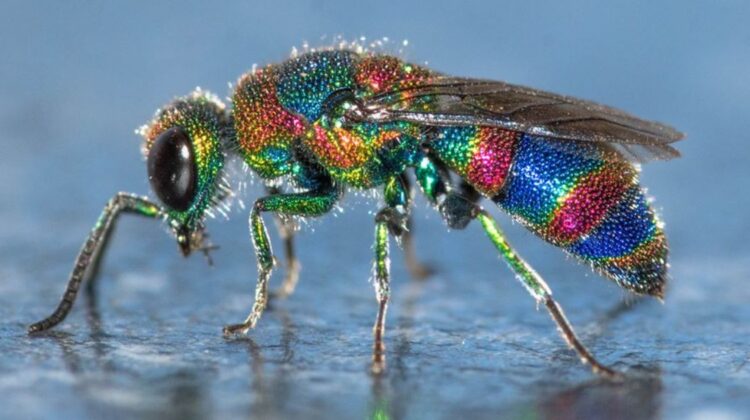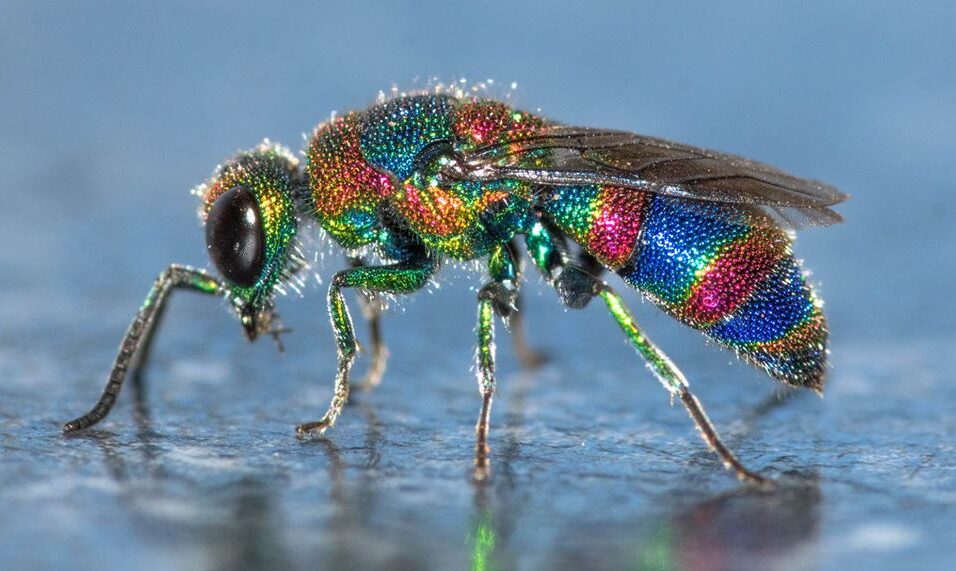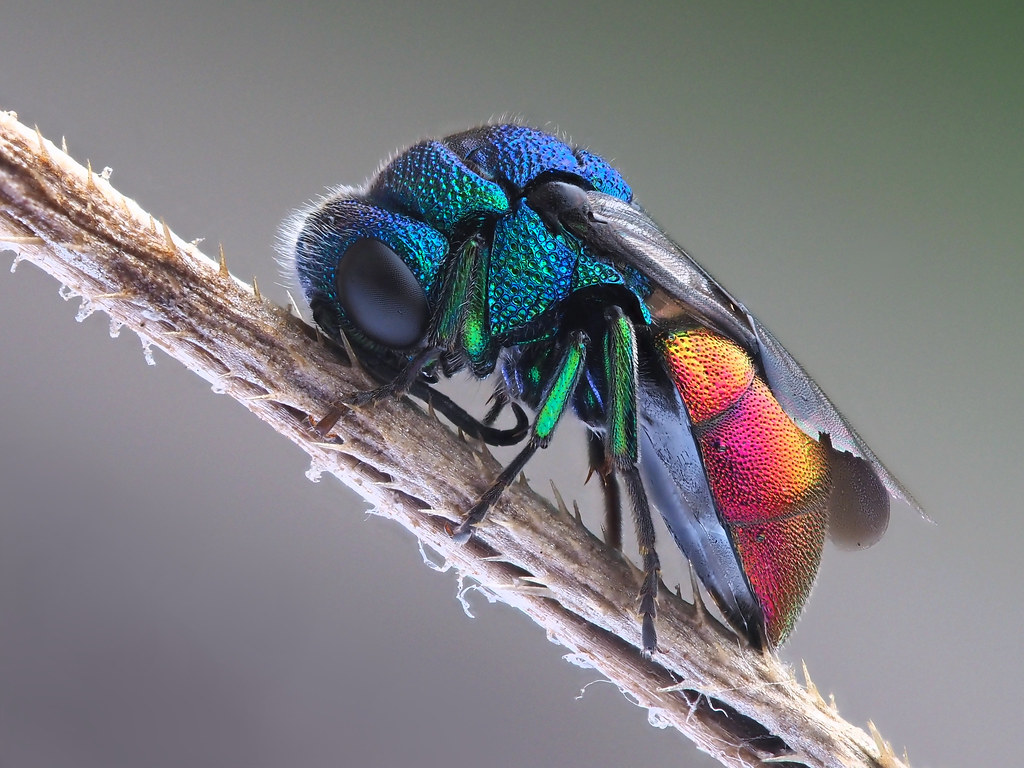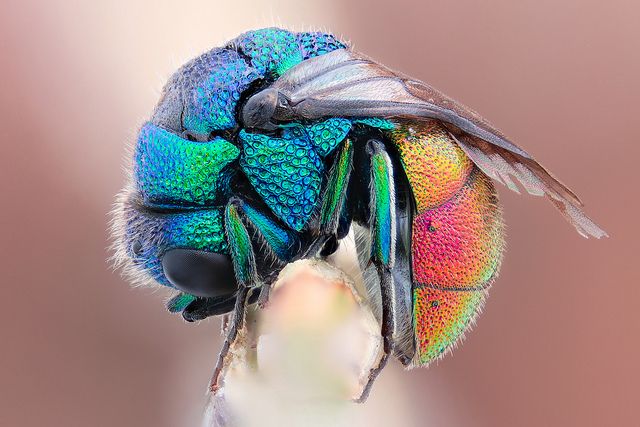
[Imagen of A close-up photo of a cuckoo wasp, a small insect with a metallic green or blue body that shimmers in the light. The wasp has a slender body and long antennae]
This iridescent bug is the cuckoo wasp, belonging to the family Chrysididae. Its glittering appearance is imparted by the many tiny, deep pits on its body surface. This wasp exhibits similar kleptoparasitic behavior as the cuckoo bird, laying its eggs in the nests of other wasps and stealing their food.

Cuckoo wasps are fascinating creatures that combine stunning beauty with a surprising lifestyle. Their metallic bodies, often shimmering green or blue, are a marvel of nature’s design. The secret to their shine lies in the intricate sculpting of their exoskeletons. Millions of tiny pits act like a diffraction grating, separating light into its component colors and creating the dazzling iridescence we see.

But beneath this dazzling exterior lies a cunning parasite. Unlike their hardworking relatives who build their own nests and provision them with food, cuckoo wasps take a shortcut. They exploit the hard work of other wasps, particularly solitary species. A female cuckoo wasp will locate a host wasp’s nest, often while the host is out hunting. With remarkable stealth, she’ll sneak into the nest and lay her egg alongside the host wasp’s eggs.

The cuckoo wasp larva hatches first, thanks to a shorter incubation period. It then devours the host wasp’s eggs or larvae, along with the food provisions left by the unsuspecting parent. By the time the host wasp larva hatches, there’s nothing left for it but to starve. The young cuckoo wasp then pupates and emerges as an adult, ready to continue the cycle of kleptoparasitism.
Cuckoo wasps are a reminder that nature can be both beautiful and ruthless. Their stunning iridescence may captivate us, but their parasitic behavior ensures their survival at the expense of their hosts.

Leave a Reply